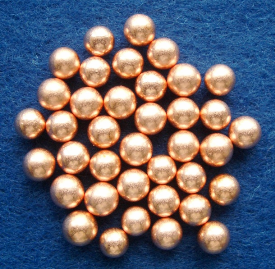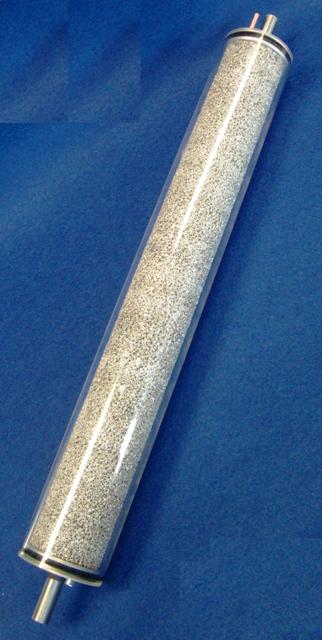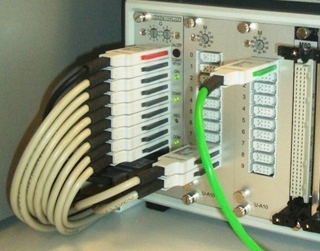


Motivation
The compensation of temporal and/or local differences between supply and demand of thermal energy by means of qualified storage technologies is more efficient than the transformation of heat into other forms of energy. The development of optimal thermal energy storages is not only focussed on maximising the storage capacity per unit volume. Further the dynamics of the loading and re-loading processes has to be fitted to the existing boundary conditions of the system in which the storage unit is implemented.
Typical applications are, for instance, in the field of solar heating and the re-use of waste heat from combustion engines, respectively. At Fraunhofer IFAM Dresden the research activities are targeted on the optimisation of the dynamics of thermal storages based on phase change materials (PCM) and the development of thermo-chemical storages. Both kinds of storages are characterised by very high volumetric storage capacities.
PCM storages
In these storages, the melting enthalpy of the PCM is used to store thermal energy (latent heat/cold). PCM usually have low heat conductivities with negative effects on the loading behaviour. One possibility to compensate this is the use of small storage capsules. For this reason, metallic hollow spheres developed and manufactured at Fraunhofer IFAM Dresden can be filled subsequently with different PCM and used as thermal storages (single spheres or jointed structure) in a wide range of possible geometries.
An alternative way is to implement heat conducting structures in larger units of thermal storages. For this purpose, metallic foams or fiber structures are qualified with the advantage of significantly increasing thermal conductivity in contrast to a minimum loss of storage capacity (porosity higher than 90 %). Detailed information on this topic are summarised in a publication which is provided for download here.
Thermo-chemical storages
These thermal storages base on the use of exothermic or endothermic chemical reactions. The temperature level of heat storage depends on the reacting species. In this regard, metal hydrides are of particular interest, which offer several synergies to the working group Hydrogen Storage Technology at Fraunhofer IFAM Dresden.
The most important advantage is – except for the high storage density – given by long-time heat storage nearly free of losses. The optimisation of such heat storages is focussed on two main targets: the development and powder-metallurgical preparation of the storage materials and the detailed simulation of mass, momentum and energy transfer considering the kinetics of the reacting system.
The service offer of the business segment Energy and Thermal Management includes:
- thermal characterisation of the materials manufactured at
Fraunhofer IFAM Dresden (cellular metals, storage materials),
- design of special storage applications with respect to flow
and heat transfer using simplified methods,
- detailed numerical simulation of mass, momentum and
energy transfer with variable boundary conditions,
- experimental validation of complete storage systems on a
laboratory scale.
 Fraunhofer Institute for Manufacturing Technology and Advanced Materials IFAM
Fraunhofer Institute for Manufacturing Technology and Advanced Materials IFAM